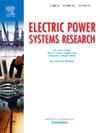Data regression strategy to model transmission line faults on vegetation
IF 4.2
3区 工程技术
Q2 ENGINEERING, ELECTRICAL & ELECTRONIC
引用次数: 0
Abstract
This paper presents a study on data regression strategies which can model real-world cases of transmission line high impedance faults (HIFs) on vegetation. A reference HIF model implemented in the Alternative Transients Program (ATP)/ATPDraw is used as a supporting computational tool to evaluate different data regression formulas, which consider different amounts of parameters to represent the most prominent features of HIF resistance variations caused by the vegetation charring phenomenon. Real cases of HIFs on vegetation that took place on a 500 kV/60 Hz transmission line are investigated, through which a novel promising rational three-parameter regression function is identified. The obtained results reveal that such a novel regression formula further improves the accuracy of other models previously reported in the literature, without requiring complex setting procedures. For instance, comparing it against another existing three-parameter HIF model, the proposed approach reduced the root mean square errors from 17.55 to 8.20 in average, also improving the coincidence rate (measured via R-square coefficient) between real and simulated signals, which increased from 0.883 to 0.975 in average.
植被条件下输电线路故障模型的数据回归策略
本文研究了基于植被的传输线高阻抗故障模型的数据回归策略。利用备选瞬态程序(ATP)/ATPDraw中实现的参考HIF模型作为辅助计算工具,对不同的数据回归公式进行了评价,这些回归公式考虑了不同数量的参数来代表植被烧焦现象引起的HIF阻力变化的最突出特征。通过对500kv / 60hz输电线路上发生的植被hfs的实际情况进行研究,确定了一种新的有前途的理性三参数回归函数。得到的结果表明,这种新的回归公式进一步提高了文献中其他模型的准确性,而不需要复杂的设置过程。例如,与现有的另一种三参数HIF模型相比,本文方法将均方根误差从17.55 Ω平均降低到8.20 Ω,并提高了真实信号与模拟信号之间的符合率(通过r平方系数衡量),平均从0.883提高到0.975。
本文章由计算机程序翻译,如有差异,请以英文原文为准。
求助全文
约1分钟内获得全文
求助全文
来源期刊

Electric Power Systems Research
工程技术-工程:电子与电气
CiteScore
7.50
自引率
17.90%
发文量
963
审稿时长
3.8 months
期刊介绍:
Electric Power Systems Research is an international medium for the publication of original papers concerned with the generation, transmission, distribution and utilization of electrical energy. The journal aims at presenting important results of work in this field, whether in the form of applied research, development of new procedures or components, orginal application of existing knowledge or new designapproaches. The scope of Electric Power Systems Research is broad, encompassing all aspects of electric power systems. The following list of topics is not intended to be exhaustive, but rather to indicate topics that fall within the journal purview.
• Generation techniques ranging from advances in conventional electromechanical methods, through nuclear power generation, to renewable energy generation.
• Transmission, spanning the broad area from UHV (ac and dc) to network operation and protection, line routing and design.
• Substation work: equipment design, protection and control systems.
• Distribution techniques, equipment development, and smart grids.
• The utilization area from energy efficiency to distributed load levelling techniques.
• Systems studies including control techniques, planning, optimization methods, stability, security assessment and insulation coordination.
 求助内容:
求助内容: 应助结果提醒方式:
应助结果提醒方式:


